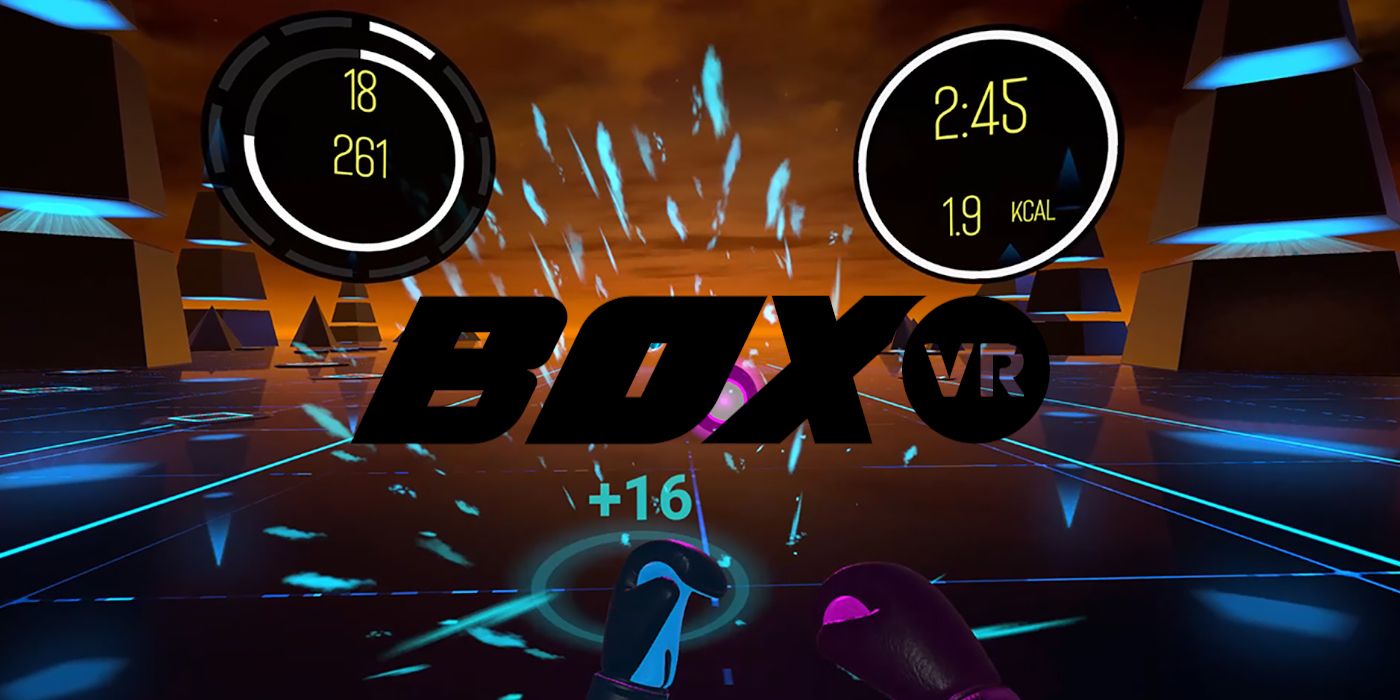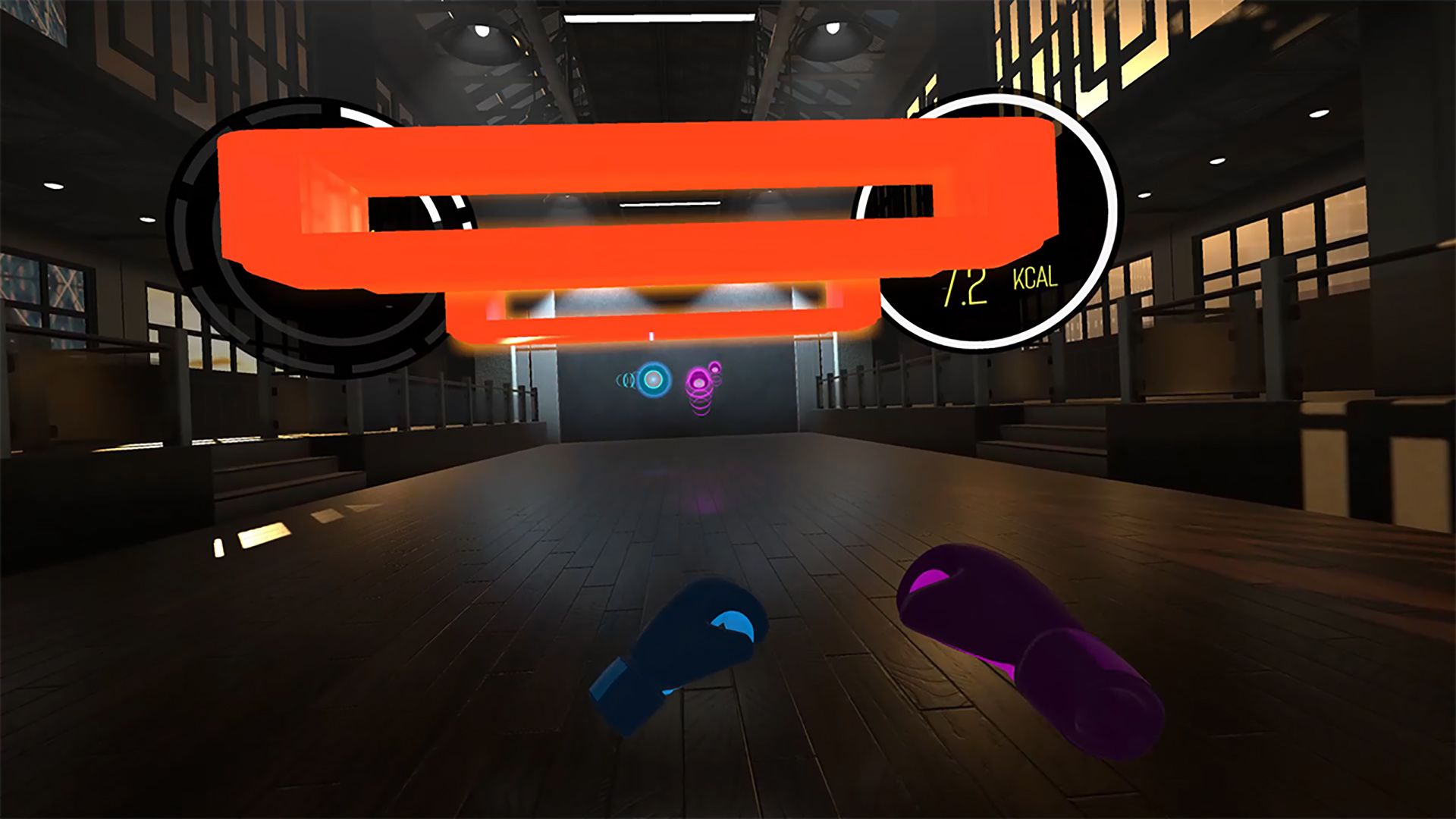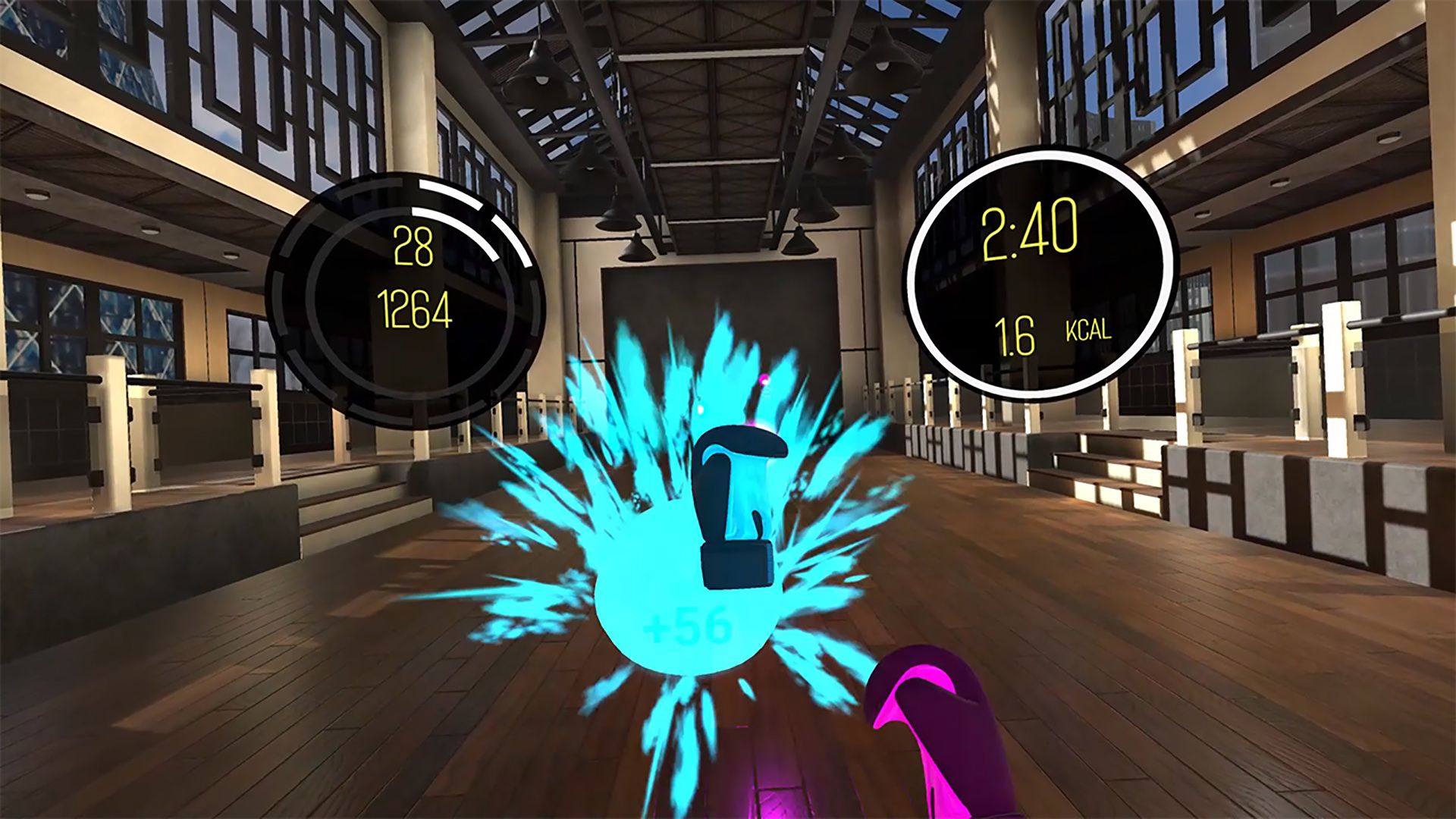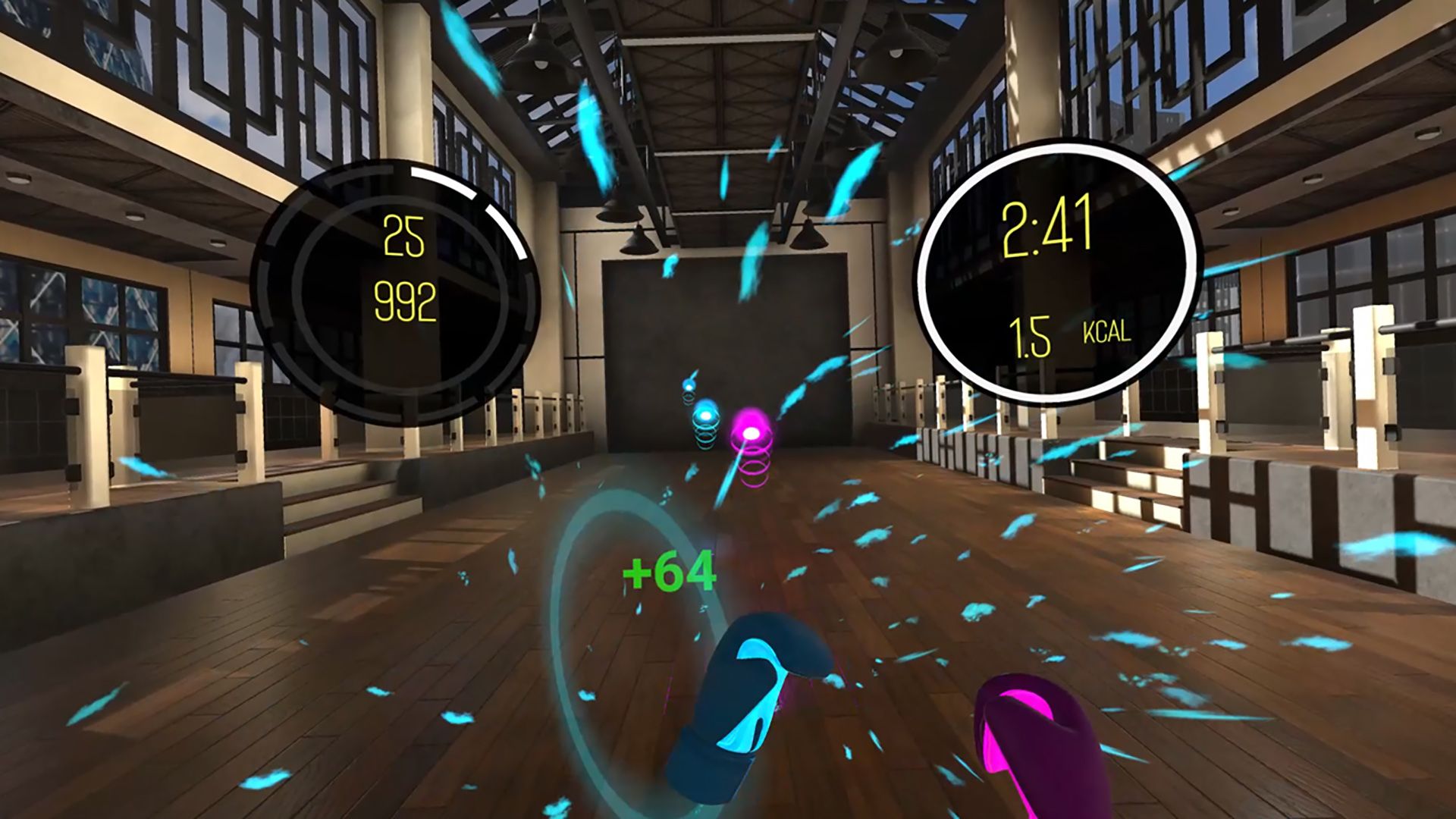BoxVR makes the jump to PlayStation VR, and its strong soundtrack and fundamental gameplay makes it an even better fitness option than Beat Saber.
Fitness and gaming go hand in hand, from as far back as the Power Pad for the original NES, then onto dance games and the Wii Fit revolution. Mixing the interactive distraction of video games with something valuable to a person's physical health can form the framework for a new and healthy routine, whether it’s Dance Dance Revolution, last month's Ring Fit Adventure for the Switch, or the runaway VR hit Beat Saber. That last one bears the clearest connection to BoxVR, originally a VR fitness game built for PC but, as with many others, now porting itself over to Sony's wallet-friendlier platform.
In certain mechanical respects, BoxVR feels a better fit on here. Holding the Move Controllers and punching forward feels somehow right, since punching with a cylinder gripped in each hand feels more comparable to actual boxing. Oculus controllers, for example, are much more geared to careful interactions or simulating firearms, but punching forward with sticks feels naturally built for cardio boxing.
On the whole gamified fitness side of things, the game is fairly bare-bones. The gameplay itself will be immediately familiar to any Beat Saber veterans, and others will pick up the basics more or less instantly. You stand in the center of a play area and enter a boxing stance (either orthodox or southpaw). As the music kicks in, blue and purple targets will race towards you, and punching on the beat destroys them and increases a tracked combo. Sometimes a block icon appears, which requires you to put your arms up to mimic blocking, and the straightforward jabs soon lead to timed hooks and uppercuts. Aside from those, large rectangles also show up on the track, requiring you to lean and/or squat to avoid them.
The above paragraph describes the mechanical entirety of the experience, but BoxVR takes those basic building blocks and the varying BPM between different songs and leverages them into a truly productive workout. An simple tutorial fills you in on the basics, and then you’re pretty much free to play the variety of workouts in any order you like (though playing through them in listed order ramps things up nicely). Warm-up workouts take a matter of minutes, and then stack up all the way to hour-long slogs.
For anyone who’s never shadowboxed or participated in any cardio boxing at all, it can be deceptively exhausting. While the game doesn’t incorporate any kicking, connecting squat-dodges to punches in the more frenetic tracks gives an all-body feel to BoxVR’s routines. Don’t be surprised if 15 or 20 minutes of play causes you to sweat profusely (and make absolute sure to wear a headband or bandanna when playing, to help keep the PS VR headset dry). As a cardio fitness tool, the basic effectiveness of the game cannot be understated: it reliably pumps your heart rate up and requires regular play to develop the endurance for its longest workouts.
When BoxVR first hit the market in 2017, some PC users mentioned issues with the recorded timing. For this PS VR release, the tracking and timing is arguably best-in-class, especially considering the amount of drift that commonly occurs with other games on the platform. Controller drift would completely wreck the feeling of getting “in the zone,” and this frequent PS VR bug didn’t show up a single time throughout our sessions. Additionally, latency always felt accurate, and with hooks and uppercuts requiring absolutely meticulous timing to register, that could’ve been another serious issue. The developers seem to have prioritized these aspects for Sony’s market, and it shows.
It should also be mentioned that BoxVR doesn’t have much in the way of bells-and-whistles, either, something that could be considered a drawback. However, people who are serious about getting into fitness certainly don’t need a drawn-out story mode or campaign or avatar cosmetics. The game has three “gyms” to choose from (two gym-like environments and one futuristic landscape), which are all perfectly fine, high-detailed 3D spaces, all of which you will absolutely ignore as you focus on the music, movement, and punch-timing. Did it need any more than three? It’s quite possible that it didn’t need more than one.
It does seem like actual fitness instructors designed the workouts themselves, because even a few minutes feels effective. As a pre-workday boost before jumping in the shower or a longer marathon gutbuster, BoxVR feels like a very efficient component of a healthy lifestyle. Of course, there is something to be said about tangling with sometimes-cumbersome VR gear, and the game does take a considerable amount of time to properly load up—it seems that it might be pre-loading most of its presentation and assets so that, once you actually start working out, there’s minimal interference or delay. Players should expect something like a two-minute load time (at least on a non-Pro PS4).
There are a few other features built in, including a multiplayer mode, but it’s tricky to find others to play with. There’s only the most rudimentary method to search for a multiplayer session to join, though you can also create a new match to host yourself and see if anyone else bites. Unless you have people on your friends list playing the game and scheduling the time for it, it seems unlikely that a player would delay their own workout just to compete with others. It should also be mentioned that PS+ is not required for BoxVR’s multiplayer, which is always nice to see.
Although it’s relegated to the bottom of this review, the music selection and diversity of available tracks here is superb. Of course, music is subjective and all, but for a range of blood-pumping tracks in electronic, pop, rock, and rap genres, BoxVR’s soundtrack is weirdly infectious and much less corny than what’s on offer in comparable games (Beat Saber included). The PC option of playing to your own music is, expectedly, not included in this version, but there are over 100 tracks here, all of which can be reconfigured into custom workout “playlists.” If even half of those songs are appealing to you (or, at least, not irritating), that’s a considerable amount of workout content, all of which can be played through using three difficulty modifiers.
Some might consider BoxVR a scant package, but it genuinely seems interested in providing a focused fitness experience with minimal fluff. It’s doubtful that it will completely overtake Beat Saber’s strong market presence, but it honestly feels like a better workout overall. Combine that quality with the conspicuous attention paid by the developers in delivering an extremely stable product on Sony’s platform (which cannot be said for many other ports), and you have a powerful asset to your fitness goals at a very reasonable cost. BoxVR is all steak and minimum sizzle, and it’s all the better for it.
BoxVR is out now for PlayStation VR, as well as on PC through Steam and the Oculus Store. A digital PS VR copy was provided to Screen Rant for purposes of review.




